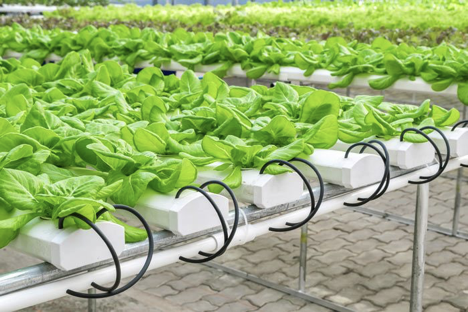Gardening is a necessity for some people and hobby for others. Whichever your case may be, you know how difficult it is to grow plants due to unpredictable factors like climate, season or soil. But now it is possible to remove these barriers due to the hydroponics system. It is the process of growing plant in water but in a soil-less medium. The plants get food from the mineral nutrient solutions. You can grow the plant indoors or anywhere using artificial lighting. So, the weather or soil condition cannot affect the growth of your plants. There are many types of hydroponic systems, and the recirculating DWC system is a popular one. If you know how to build a recirculating DWC system, gardening will become much easier.

Benefits of the hydroponic system
In a hydroponic system, plants are grown in different mediums like coconut coir, perlite, vermiculite, etc. The hydroponic system removes the barriers for growth of a plant. With this system, you can get increased growth rates of plants compared to those that are grown in soil. Plants also yield about 25% more than those grown on soil. The reason for more yield and plant growth is that the plants can now get the nutrients easily without any barrier.
What is deep water culture (DWC)?
Deep water culture (DWC) is a type of hydroponic gardening system where plant roots are kept in a well-oxygenated solution that has lots of nutrient and water all the time. The roots are always submerged in deep water. The reservoir that is used to hold the plant can hold lots of water. In the other hydroponic systems, the roots of the plant are hung, and so they need to be watered continuously.
Recirculating Deep Water Culture (RDWC)
There are many varieties of DWC system, and recirculating deep water culture (RDWC) is one of them. The traditional DWC system has a self-contained local system. You need to check the individual system for nutrient levels, pH, etc. If there are lots of plants, then it can be a very tedious task. The traditional DWC system is perfect for small systems. But for a larger system, you need to use RDWC.
In the RDWC system, you can add many buckets that must be connected to the big central reservoir to create a steady flow of water. All you need to do is add water, set up the central reservoir and oxygenate. The nutrients and water will be circulated from bucket to bucket. The continuous water flow prevents infection and keeps the plant roots clean.
How to build a recirculatory DWC system?
In the recirculatory DWC system (RDWC), you need to combine some separate deep water culture systems into one system. The systems are connected by pipes. The water is controlled by an inline water pump. Air pumps and oxygen stones are kept in each pot so that the water remains oxygenated. To build an RDWC system, you need to follow these steps:
• You need to have a large reservoir or tank where you will keep the feeding solution. This tank will be connected to smaller reservoirs for each plant. The feeding solutions will be fed to these small tanks from the large tank, and it will be recirculated back to the tank. The tanks will be connected by pipes. An inline water filter is needed to recirculate the water.
• The roots will be fully immersed in the nutrient-rich water. The reservoir must be kept in a light-proof container.
• You need to have an air stone and air pump in the large tank. You can also have one air stone for each plant. The air stones form bubbles that allow a proper exchange of gases.
• You need to keep the plants in net pots. These are special pots having a wide mesh that lets the roots reach the water underneath. If you can’t get these pots, then you can make large holes in the plastic flower pots or other containers.
• You should now fill the pot with a medium such as clay pellets, perlite or lava rocks.
• You should maintain the correct pH value of the nutrient solution. It should be in the range of 5.5 to 6.5; the ideal value is 5.8.
• You can renew the reservoir every one or two weeks. You can use an EC meter to monitor the condition of the nutrients in the reservoir.
You can grow plants like lettuce, tomatoes, squash, herbs, etc. using this method. One of the major advantages of RDWC system is that assembling the components is also very easy and watering is not difficult at all. It also requires very low maintenance. Once it’s set, you can ensure that the right amount of oxygen and nutrients are passed to the plants. You can get taller plants and better yield through this system.
